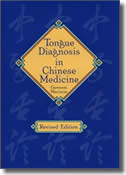 Tongue diagnosis is an integral part of taking a medical history in Chinese medicine. Giavanni Macciocia, a renowned acupuncturist and herbalist from the United Kingdom, in my opinion, has compiled the most complete reference available to English speaking practitioners with his book “Tongue Diagnosis in Chinese Medicine”.His book was one of the first that I purchased as an acupuncture student and remains an invaluable reference in my practice today.
Tongue diagnosis is an integral part of taking a medical history in Chinese medicine. Giavanni Macciocia, a renowned acupuncturist and herbalist from the United Kingdom, in my opinion, has compiled the most complete reference available to English speaking practitioners with his book “Tongue Diagnosis in Chinese Medicine”.His book was one of the first that I purchased as an acupuncture student and remains an invaluable reference in my practice today.
In Chinese medicine, disease is explained by an imbalance of yin and yang and heat and cold in the human body. Chinese medicine believes that chronic imbalances will have a definite impact on the color and shape of the tongue body and the color and thickness of the tongue coating.
A normal tongue is described as light red in color with a thin white coating. The tongue should not be too wet nor too dry. The tongue should be without cracks or movement. It should not be too long or too short nor too stiff or too flaccid.
The tongue being a holographic representation of the human body, Macciocia gives a detailed explanation of organ mapping on the tongue. Tongue body color reflects the health of the internal organs. When the tongue changes from the normal pale red to very pale, dark red, purple or blue it is a clear picture of pathological changes in the body. Changes in the shape of the tongue body will indicate the severity or duration of the condition. Tongue coating can change quickly, but will be a clear indication of the presence of heat or cold in the body and whether or not the nature of the disease is one of excess or deficiency. Mr. Maciocia discusses all of theses changes. Mr. Maciocia also discusses the impact of certain medications on the tongue picture and he discusses in great detail the significance of different types and locations of tongue cracks. Mr. Maciocia has a website where he has posted thirteen tongue photos with a Chinese medical interpretation.
In my practice, I rarely see tongues as severely impacted by imbalance as are shown in the color illustrations in Macciocia’s book or on his website. But I do see some common presentations. For example, many people who suffer from arthritis or sinus or digestive problems will have a tongue that appears puffy with a scalloped edge. People who suffer from insomnia often have a red tongue tip. Menopausal women suffering from hot flashes and night sweats often have a very red tongue with cracks and no coating. And those patients who feel cold all the time, have very little energy and frequent urination may have a tongue that is pale and wet.
Along with a complete medical questionnaire and pulse diagnosis, the tongue picture will confirm a Chinese medical diagnosis and will lead the practitioner to design an acupuncture and/or herbal treatment plan to restore balance.
Western medicine has begun to take notice of the correlation between cancer patients and changes in the color, coating and texture of their tongues. There is a very interesting article in the December 2002 issue of “Acupuncture Today” which discusses a scientific study being conducted at Pittsburgh Medical Center. Researchers have begun taking computerized images of patients’ tongues to see if an examination can provide an early indication of colon cancer.
I believe that when the wisdom of Chinese medicine meets the technological advances of western medicine, we will all benefit.
About the Author:
Joyce Marley is a licensed acupuncturist located inNew Hartford, NY. She writes alternative health articles about acupuncture and Traditional Chinese Medicine (TCM).



